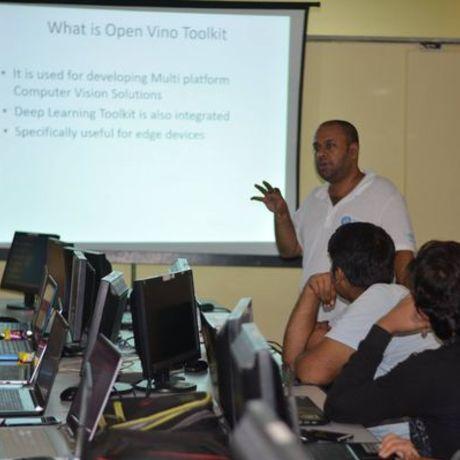Single Cell Trajectory Inference using One API (Daal4py, One DAL) Toolkit and Dynverse(R based)
Overview Single Cell omics Trajectory Inference abbreviated as (TI) methods are important to us for the analysis of Cellular dynamic process and how gene regulation work. ...learn more
Project status: Under Development
Overview / Usage
Single Cell Omics
Single Cell Omics is the profiling of single Cells sampled from the heterogeneous population of Cells from the different Cellular States, where the normal development and disease process can be studied and dissected at a single-cell resolution
Why Single Cell Omics is useful
Single Cell Omics is useful because it allows us to study various areas of biology, diseases, such as development, microbial population composition, and cancer evolution.
Overview
Single Cell omics Trajectory Inference abbreviated as (TI) methods are important to us for the analysis of Cellular dynamic process and how gene regulation works.
One API (DAAL4Py, One DAL) Implementation scenarios
Intel One API is a very important tool that allows the development of a Data parallel application in one place and to be deployed for different Intel Software stack and Architectures.
Using One API we are going to implement and understand the Topology structure from the matrix we are given.
The data comes to us as a CSC format. It’s in the Sparse matrix format which is commonly known as CSC format. To faster access and read the data we use Intel Distribution of Python from One API distribution and specifically stressing on SciPy and NumPy libraries for making the things faster.
Introduction
Here, we are focussing on the expression of genes which is also known as transcriptome of a call
The cell structures undergo a lot of change on external as well as internal stimuli.
If we can profile different cells at different stages, we can construct the paths that cell take.
These paths are called trajectories, and the methods that infer them from single-cell data are called trajectory inference (TI) methods.
Methodology / Approach
As an input, we are given the expression of thousands of genes within thousands of cells.
The expression is given as a count matrix which is given as a count matrix which is CSC format and using a faster method to access, we apply One DAL to read the file (Intel Distribution Of Python).
The goal here is to construct a topology that represents these cells and to place these cells on the correct locations along with the Topology.
Technologies Used
Intel One API
Dal4Py
DevCloud
Collaborators
There are no people to show.







